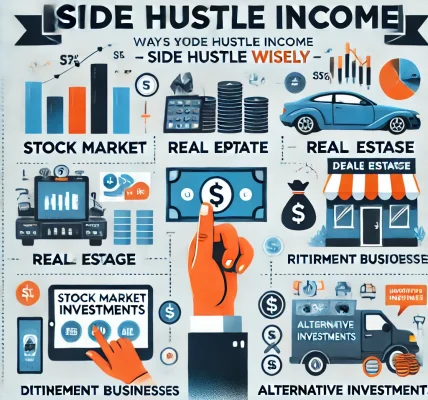Managing debt effectively is a crucial aspect of financial well-being. Whether you have student loans, credit card debt, personal loans, or a mortgage, creating a strategic plan to pay off your loans faster can help you achieve financial freedom sooner. This guide explores the best debt management strategies to help you get out of debt efficiently while avoiding legal and financial pitfalls.
Understanding Your Debt
Before implementing a repayment strategy, it’s important to assess your financial situation:
- List All Your Debts – Gather details of all outstanding debts, including balances, interest rates, and minimum payments.
- Check Your Credit Report – Understanding your credit score and history helps you determine if refinancing or consolidation is an option.
- Calculate Your Debt-to-Income Ratio – This ratio helps you evaluate how much of your income goes toward paying off debt.
Once you have a clear picture of your debt, you can select the best repayment method.
Effective Debt Repayment Strategies
1. The Debt Snowball Method
This strategy involves paying off the smallest debt first while making minimum payments on others. Once the smallest debt is cleared, you move to the next smallest, and so on.
Pros:
- Motivational as small wins build momentum.
- Helps create positive financial habits.
Cons:
- May not save the most money on interest.
2. The Debt Avalanche Method
With this method, you prioritize paying off the debt with the highest interest rate first while making minimum payments on the rest.
Pros:
- Saves more money in interest over time.
- Helps you pay off debt faster compared to the snowball method.
Cons:
- Requires discipline since high-interest debts are often larger and take longer to pay off.
3. Debt Consolidation
Debt consolidation involves combining multiple debts into a single loan with a lower interest rate. This makes payments more manageable and can reduce overall interest costs.
Pros:
- Simplifies debt repayment with one monthly payment.
- Potentially lowers the interest rate.
Cons:
- Requires a good credit score for the best rates.
- Can extend repayment terms, leading to higher total costs.
4. Balance Transfer Credit Cards
A balance transfer credit card allows you to move high-interest credit card debt to a new card with a 0% introductory interest rate for a specific period.
Pros:
- Can significantly reduce interest payments.
- Allows you to focus on repaying the principal amount.
Cons:
- Typically includes balance transfer fees.
- The 0% rate is temporary; if not paid off in time, interest rates can be high.
5. Increasing Monthly Payments
Adding extra payments beyond the minimum reduces the principal faster and decreases the total interest paid.
Pros:
- Shortens loan repayment time.
- Reduces overall interest costs.
Cons:
- Requires extra income or budgeting adjustments.
6. Refinancing Loans
Refinancing replaces an existing loan with a new one that has a lower interest rate or better terms.
Pros:
- Lowers monthly payments or reduces interest rates.
- Can shorten the repayment period.
Cons:
- May include fees or prepayment penalties.
- Approval depends on creditworthiness.
7. Creating a Budget and Cutting Expenses
A well-planned budget can free up extra funds to accelerate debt repayment.
Steps:
- Track your expenses and eliminate non-essential spending.
- Redirect savings toward loan payments.
- Use financial tools and apps to monitor spending habits.
Avoiding Debt Traps
To stay out of debt and maintain financial stability:
- Avoid Taking on New Debt – Refrain from unnecessary loans or credit card purchases.
- Build an Emergency Fund – Having savings prevents reliance on credit during unexpected expenses.
- Negotiate Better Interest Rates – Contact lenders to request lower interest rates or better repayment terms.
- Seek Professional Financial Advice – A financial advisor can help create a customized debt repayment plan.
Psychological and Behavioral Approaches to Debt Repayment
- Set Clear Goals – Define realistic timelines and debt-free milestones.
- Stay Motivated – Track progress and celebrate small wins.
- Use the Envelope System – Allocate cash for different expenses to prevent overspending.
- Find an Accountability Partner – Share your debt-free journey with a friend or family member for support.
Final Thoughts
Becoming debt-free is achievable with the right strategies and discipline. By choosing an effective repayment method, cutting unnecessary expenses, and avoiding new debt, you can accelerate loan repayment and achieve financial stability.
Start today, stay consistent, and take control of your financial future!




